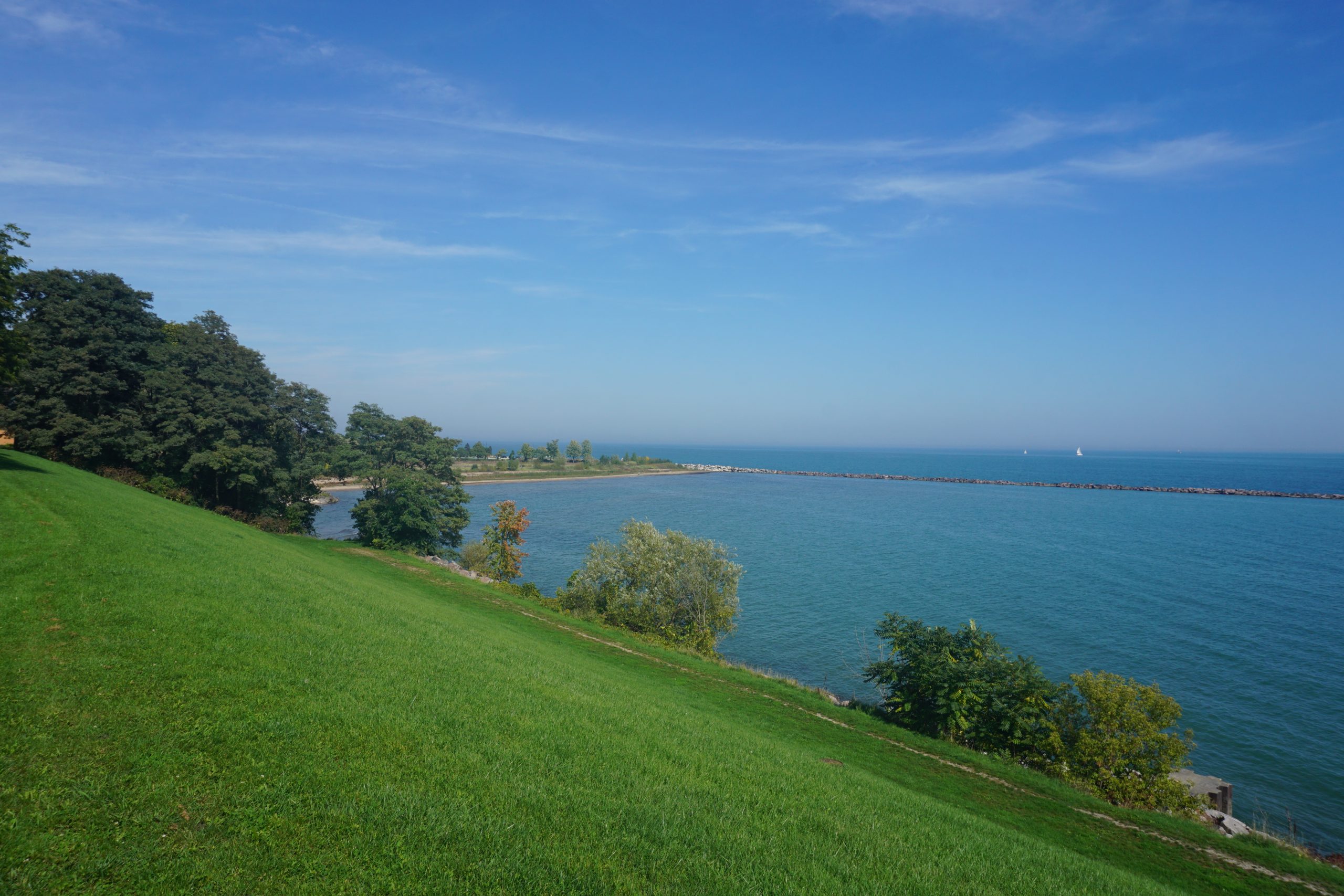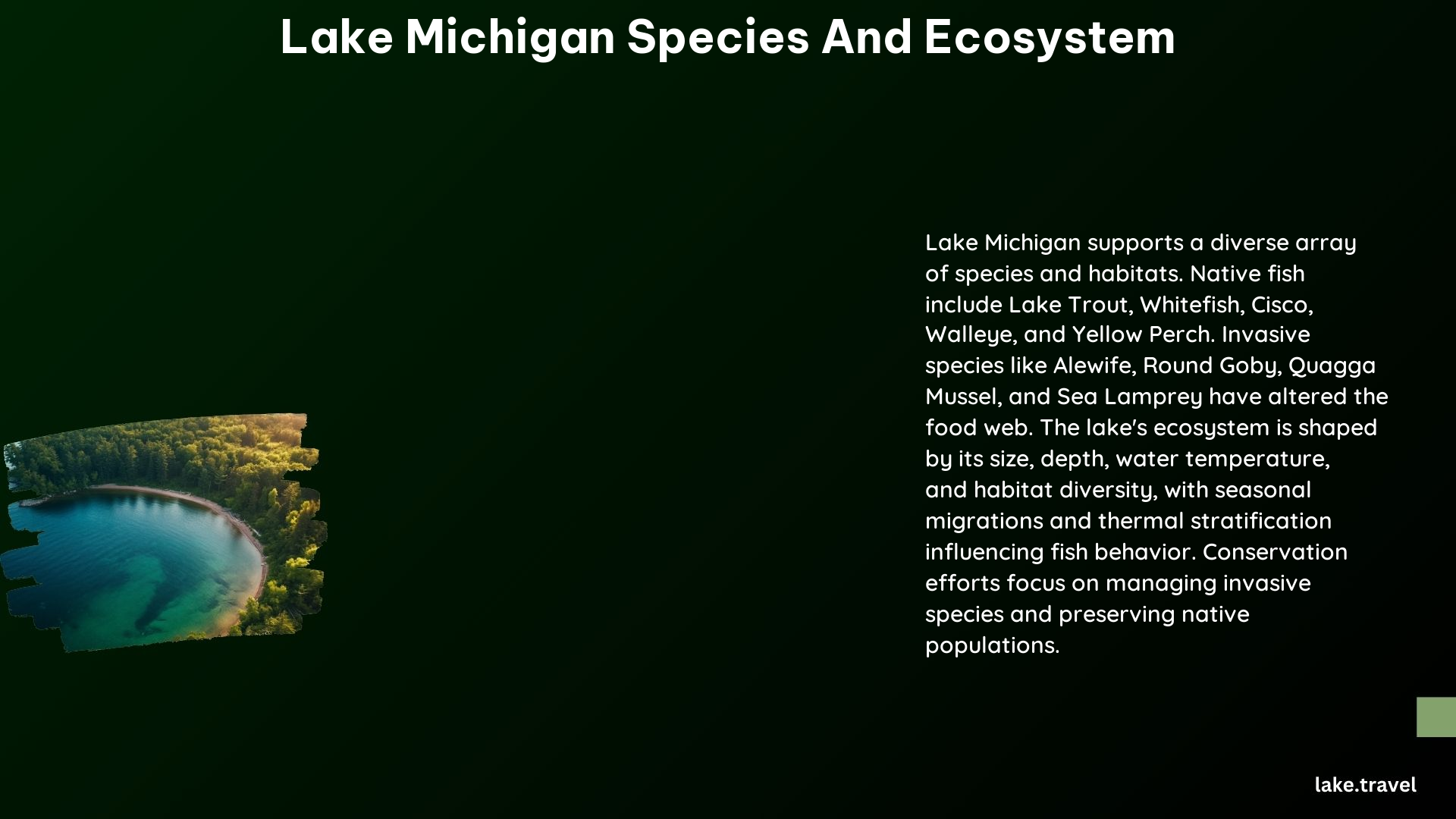Lake Michigan, the second-largest of the Great Lakes, is home to a vibrant and diverse ecosystem teeming with a wide array of plant and animal species. From native fish like the iconic Lake Trout to the invasive Sea Lamprey, the lake’s waters support a delicate balance of life that is constantly evolving. In this comprehensive guide, we’ll dive deep into the fascinating world of Lake Michigan’s species and ecosystem, exploring their unique characteristics, the challenges they face, and the ongoing efforts to preserve this natural wonder.
Native Species of Lake Michigan

Lake Michigan’s native species have adapted to the cold, deep waters of the lake over centuries, playing crucial roles in the overall ecosystem. Let’s take a closer look at some of the most prominent native species:
Lake Trout
The Lake Trout is an iconic species in Lake Michigan, contributing significantly to the multi-million dollar sport fishery. These large, predatory fish are known for their impressive size and are highly sought after by anglers.
Yellow Perch
A common and popular fish species in Lake Michigan, the Yellow Perch is a favorite among recreational and commercial fishermen. These small, tasty fish are an important part of the lake’s food web.
Lake Sturgeon
The Lake Sturgeon is the longest-living fish in Lake Michigan, with some individuals reaching over 100 years old. This ancient species was once nearly extirpated due to overfishing, but conservation efforts have led to successful restocking programs.
Lake Whitefish
The Lake Whitefish is another native species that plays a crucial role in the lake’s ecosystem. These fish are an important food source for larger predators and are also prized by commercial and recreational fishermen.
Muskellunge
The Muskellunge, also known as the “Muskie,” is the Wisconsin State Fish and can be found in the waters of Lake Michigan. These large, predatory fish are highly sought after by anglers for their impressive size and fighting ability.
Invasive Species in Lake Michigan

While the native species of Lake Michigan have adapted to the lake’s unique environment, the introduction of invasive species has had a significant impact on the ecosystem. Some of the most notable invasive species in Lake Michigan include:
Sea Lamprey
The Sea Lamprey, often referred to as the “Vampire of the Great Lakes,” is a parasitic fish that attaches to larger fish and sucks their blood. This invasive species has had a devastating impact on native fish populations.
Alewives
Alewives, a small, herring-like fish, were first introduced to Lake Michigan in 1949 and at one point accounted for up to 80% of the lake’s biomass. Their dominance has had far-reaching effects on the ecosystem.
Pacific Salmon
In an effort to control the Alewife population, Pacific Salmon species were introduced to Lake Michigan. While this has helped manage the Alewife problem, the introduction of these non-native salmon has also had consequences for the lake’s ecosystem.
Zebra and Quagga Mussels
These small, invasive mussels have had a significant impact on Lake Michigan’s ecosystem. By filtering nutrients from the water, they have improved water clarity but have also altered the food web and impacted native species.
Conservation Efforts and Ecosystem Management
Recognizing the importance of preserving the delicate balance of Lake Michigan’s ecosystem, various organizations and initiatives have been working to protect the lake and its inhabitants. Some of the key conservation efforts include:
The Great Lakes Compact
Signed in 2008, the Great Lakes Compact is a legally binding agreement that protects the fresh water of the Great Lakes as a shared resource. It requires the agreement of all bordering states and provinces for any water withdrawals or diversions.
Alliance for the Great Lakes
The Alliance for the Great Lakes is a non-profit organization dedicated to keeping the Great Lakes, including Lake Michigan, clean and healthy. They work on a variety of strategies and initiatives to protect the lakes.
Restocking Lake Sturgeon
Multiple organizations, including state and federal agencies, have partnered to restock the Lake Sturgeon, a species that was once nearly extirpated from Lake Michigan due to overfishing.
Educational Efforts
Nature centers, environmental organizations, and educational institutions play a crucial role in educating the public about the native and invasive species of Lake Michigan, as well as the importance of water quality, erosion, and overall ecosystem health.
Impact of Invasive Species on the Lake Michigan Ecosystem
The introduction of invasive species to Lake Michigan has had a significant impact on the lake’s ecosystem, leading to both ecological changes and challenges for native species.
Ecological Changes
The presence of invasive species like zebra and quagga mussels has dramatically altered the lake’s ecosystem. These mussels have filtered out nutrients from the water, leading to increased water clarity but also impacting the food web and the overall balance of the ecosystem.
Native Species Decline
The influx of invasive species has contributed to the decline of many native fish populations in Lake Michigan. The Sea Lamprey, in particular, has had a devastating effect on native species like the Lake Trout, leading to significant population declines.
Recreational and Educational Opportunities
Despite the challenges facing Lake Michigan’s ecosystem, the lake remains a popular destination for a variety of recreational activities and educational experiences.
Fishing
Lake Michigan is renowned for its excellent fishing opportunities, attracting anglers from around the world who seek to catch species like Lake Trout, Yellow Perch, and Muskellunge.
Boating
The vast expanse of Lake Michigan offers ample opportunities for boating, sailing, and other water-based recreational activities.
Educational Tours
Nature centers, museums, and other educational institutions along the shores of Lake Michigan provide visitors with the chance to learn about the lake’s diverse marine life, conservation efforts, and the importance of protecting this natural resource.
Key Statistics and Facts about Lake Michigan
- Water Quality: Lake Michigan’s water quality is generally good, with most toxic chemicals declining in the environment.
- Coastal Wetlands: The condition of coastal wetlands is fair, with some areas degraded and others healthy.
- Aquatic Habitat Connectivity: Over 80% of tributary habitat is no longer accessible to migratory fish, but projects have increased connectivity.
References
- City Cruises. (2022). The Surprising Sea Life of Lake Michigan. Retrieved from https://www.cityexperiences.com/blog/lake-michigan-sea-life/
- State of the Great Lakes. (n.d.). Lake Michigan. Retrieved from https://stateofgreatlakes.net/lake-assessments/lake-michigan/
- Schlitz Audubon Nature Center. (2018). Lake Michigan Wildlife: Native & Invasive Species. Retrieved from https://www.schlitzaudubon.org/2018/04/19/a-history-of-lake-michigan-wildlife/.
